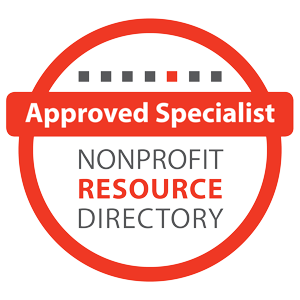How to Start a Capital Campaign (5 Capital Campaign Phases)
TAKE THESE 5 STEPS BEFORE STARTING YOUR CAPITAL CAMPAIGN
The beginning stages of a capital campaign can be an exhilarating and scary time. You know you have a burning need – for a new building, a new program, a new position – and the possibilities you see once that need is met are so exciting. But you also know you’ll need your stakeholders’ help to fund your new idea, and beginning that process can be overwhelming.
It should come as no surprise, but capital campaigns that lack a focused plan for success rarely succeed. And in the trying and failing, real damage can be done. Damage to your reputation, damage to your organization’s financial health, damage to your group morale, and so on. Fortunately, there are steps you can take from the outset that will help focus your priorities, shape your plan, and determine your campaign’s feasibility so you can launch your fundraising efforts with confidence. To begin, you must start thinking strategically.
STEP 1: DEFINE YOUR STRATEGIC PRIORITIES
For a campaign to succeed it must be a strategic priority, in that it supports the future accomplishment of your group’s overall mission. In fact, it must be the highest strategic priority. But – and this is critical – that does not make it the most important objective of your organization. In other words, your new capital campaign must not take priority over accomplishing your real work. Instead, once completed, your campaign should advance or enhance your work.
Ask these driving questions to drill down towards your strategic priorities:
- Do you have a current strategic plan?
- Do you consult it frequently?
- Is it still accurate?
- If so, does it indicate a capital priority?
- If it’s not still accurate, can you update it?
- If there’s no evident capital priority, why are you considering capital as a possibility?
- Maybe your plan isn’t accurate after all?
- What do you do about that?
Once you’ve identified a possible priority, consider this: any priority – and especially a fundraising priority – is only important if it takes you somewhere that has meaning for investors. That somewhere is your vision, your dream about what could be possible once that burning need is met.
Your strategic plan should state a vision that is achievable in a specific time horizon. Whether it’s a bake sale or a cancer center, its importance should transcend its singular impact. It needs to feed a vision.
STEP 2: DEFINE YOUR STRATEGIC PLAN
Once you’ve established your strategic priorities, now it’s time to create a plan for implementation that includes the following elements:
- Mission
- Vision
- Values
- Priorities
- 18-Month Implementation Plan including:
- Measurable objectives
- Strategies
- Tactics
- A timetable with assigned responsibilities
- A gap analysis
- Gap solutions (bandwidth/expertise/finding)
These concepts are of critical importance for both your organization and your investors so you must take the time to develop them completely. This second round of driving questions will help:
- Is our mission clear and concise? (Define who we are and what we do)
- Do we have a vision? (Define who will we be serving in 5 or 10 years and what will they need from us)
- What are our values?
- Can we assess the delta between our mission and vision? In other words, what’s preventing us from fully integrating our mission with our vision?
- Do we have priorities that target the delta and take us to our vision?
- Do those priorities align with our values?
Once you’ve defined your plan’s components, make sure they accomplish the following:
- Mission answers who and what
- Vision answers where
- Values answer why
- Priorities answer how
This process will probably take some time and must involve your important stakeholders, but once it’s completed you’ll have a much better tool than an “elevator speech.” You’ll have talking points to begin a conversation.
STEP 3: DEFINE YOUR CAMPAIGN TYPE
Now you’re probably asking yourself, “So I have answers, now what do I do?” Odds are you’ve identified strategic priorities AND gaps in your capacity to address them. These are opportunities for strategic philanthropic investment. Now it’s time to determine what form your campaign should take.
There are three main categories for fundraising campaigns:
- Capital: bricks and mortar
- Capacity: staff and/or programs
- Endowment: donor restricted fund that generates investment revenue to fund organizational needs in perpetuity.
Many campaigns include elements of all three.
Assuming you’ve identified strategic priorities that are critical to achieving your vision, and have further identified gaps in your ability to be successful, you can now ask the questions that brought you here in the first place:
- How do I conduct a capital campaign?
- How much can I raise?
- How long will it take?
- How much will it cost?
- These questions will be answered as you determine your campaign’s feasibility.
STEP 4: DEFINE YOUR CAMPAIGN
This is where the rubber really begins to meet the road. During step 4, you’ll set goals, develop timelines, plot campaign stages, and begin spending money. At this point, you may decide to hire campaign counsel – an outside group that can help plan and conduct your campaign – or you may decide to do the work in-house. Whichever route you take, your campaign must begin with an assessment of its feasibility.
DETERMINE FEASIBILITY
Whether or not you use campaign counsel, you will need to have a third party conduct feasibility. It’s an essential first step. Why?
It will tell you if your:
- Mission and vision are compelling
- Campaign focus is worthy of investment
- Financial goal is achievable
Feasibility identifies critical, independent feedback that informs you on, not only how much support is possible, but what issues need to be specifically addressed to attract that support. Feasibility will use this vital information to create a preliminary campaign plan identifying your first 10 to 15 steps in sequential order. The final feasibility report, which is presented to participants, should give a sense of scale to how much is possible and how long it will take.
DETERMINE LENGTH
Once you’ve received your feasibility report, you can now begin plotting real steps to accomplish your fundraising goals. Start with setting a defined length for your campaign. Length is determined by the capacity and readiness of prospects to give at leadership levels and the size of and need for a community campaign.
How long is average?
- 3 to 5 years from feasibility to conclusion of the fundraising.
- Construction usually occurs between years 3 and 4, with a community campaign to follow ribbon cutting for as much as 12-18 months.
Campaigns are often conducted in phases. The reasons for this vary, but are generally because of one of two factors:
- The campaign is designed that way based on the project scope and cost and the feasibility findings.
- The campaign needs to be phased as a result of fundraising challenges.
DETERMINE CAMPAIGN STAGES
Campaign stages refer to the strategic steps a campaign experiences from beginning to end. If you’re following this as a guide, you’ve already completed step one and two.
- Strategic planning and gap analysis
- Feasibility
Next begin mapping out when you’ll approach your segmented donors. Many capital campaigns follow this track:
- Advance gifts
- Leadership gifts
- Community campaign
This will keep your campaign focused and directed in the right places during the right time. Once the campaign stages have been set you’re nearly ready for launch! See, that wasn’t so hard.
A WORD ABOUT CAMPAIGN COUNSEL
There are many groups out there willing to help develop your capital campaign – for a fee – but if you’re not careful, you could end up paying too much or not getting the right level of service for your money. Here are a few helpful guidelines to follow:
WHAT SHOULD I EXPECT TO PAY
- Do not pay a percentage. Consultants should charge by the hour, by the project, or by retainer.
- Depending on the size, feasibility studies can run from $30,000 to more than $100,000.
- Campaign counsel should not cost you more than 10 percent of the campaign total.
- Full-service retainers can run from $3,000 to more than $20,000 per month and are based on hourly rates that run from $150 to more than $400 per hour.
WHAT DOES ‘FULL SERVICE’ MEAN
Larger institutions may require only high level strategy and consulting. This is not full service. Smaller organizations may need help with all campaign phases including:
- Prospect research
- Grant writing and foundation outreach
- Special event support
- Public funding strategies and support
WHAT SHOULD I EXPECT TO GET FROM CAMPAIGN COUNSEL?
- Best practices, strategies, and methodologies.
- Experiences and resources to adapt strategies and tactics to a fluid dynamic.
- Support with plan implementation, including recruitment and support of volunteer leadership, and participation in leadership solicitations.
- Accountability to the plan.
STEP 5: ASK FINAL QUESTIONS
Up to this point you’ve put in a lot of hard work developing your campaign and are ready to launch. But before pulling the trigger, ask yourself a few important final questions.
1. Is your board on board?
An undertaking of this magnitude requires buy-in from all organizational levels. Don’t try and do something like this from the Executive Director chair.
2. Are there other priorities that take precedence over a strategic campaign?
If so, that doesn’t mean cancel your campaign. But you may need to put first-things-first and build a staircase towards your campaign.
3. Are you playing well with others?
High capacity donors expect synergy.
CLOSING
Hopefully this primer has helped demystify the process of launching complex capital campaigns but most organizations will still need help executing their plan. Westby Associates has a long history of working with large institutions like universities and hospitals such as:
- OHSU
- Legacy Emanuel Children’s Hospital
- Southwest Washington Medical Center
- Pacific University
- Western Oregon University
- Fort Vancouver National Trust
- Open House Ministries
And smaller organizations like:
- Columbia Center for the Arts
- Columbia River Community Health Services
- Elgin Health Clinic
- Friends of the Carpenter
- International Children’s Care
If you’d like to talk more about your organization’s need, we’d love to hear from you. You can call us at (360) 750-3825 or by email at patti@westbyassociates.com.







